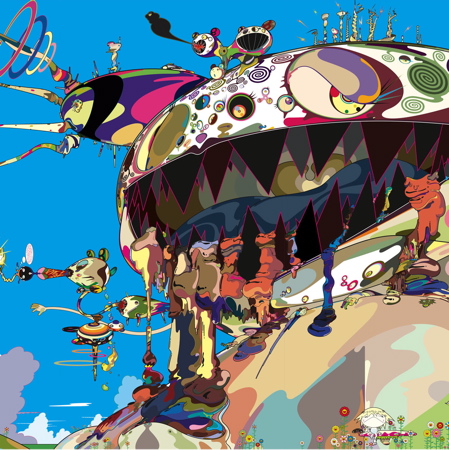
Takashi Murakami at MOCA
Here are some images from ©MURAKAMI, a retrospective exhibition of work by Japanese artist Takashi Murakami, which opened two weeks ago at the Museum of Contemporary Art in Los Angeles.
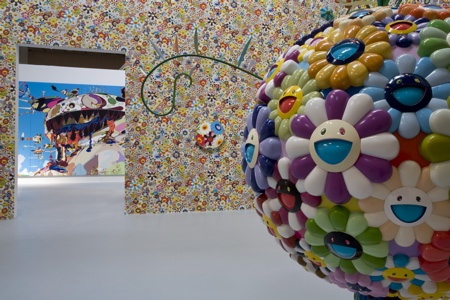
The exhibition includes paintings, sculptures and animation by the artist, including the unveiling of a new animation called Kaikai & Kiki.
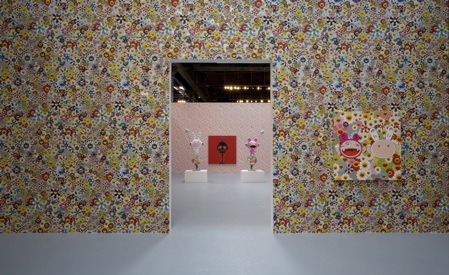
Watch Murakami give a tour of the exhibition, and a preview of the new animation at www.moca.org/murakami
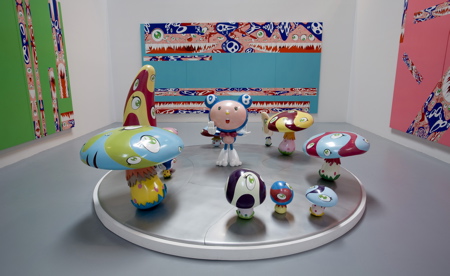
©MURAKAMI is at the Geffen Contemproray at MOCA until 11 February, 2008. See our earlier story about the Louis Vuitton "fleeting store" at MOCA that forms part of the exhibition.
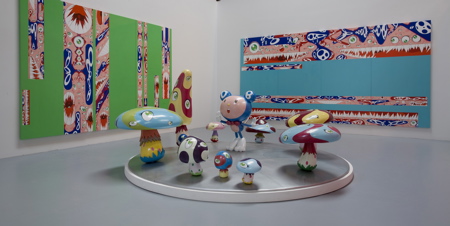
All artwork © Takashi Murakami/Kaikai Kiki Co., Ltd. Photographs are by Brian Forest except where stated otherwise.
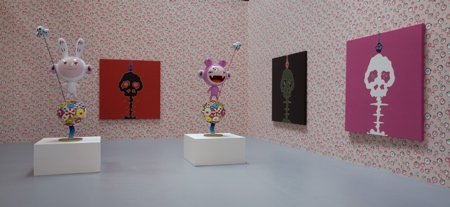
The following text is from the Museum of Contemporary Art:
--
©MURAKAMI is a diverse and substantial exhibition spanning Takasi Murakami's entire career, combining early and newly completed sculptures, installations and paintings. Organised by the Museum of Contemporary Art and curated by MOCA Chief Curator Paul Schimmel, the exhibition features more than 90 works from the internationally acclaimed artist, some of which will be unveiled to the public for the very first time.
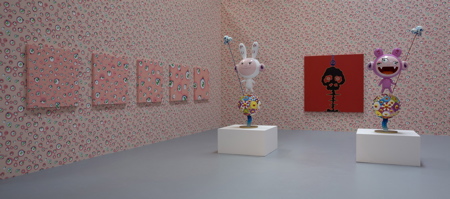
"MOCA is presenting the most comprehensive Murakami retrospective to date, as well as introducing the latest in an extraordinary collection of works from this seminal, Japanese artist. We are delighted to be hosting such a varied program of events to explore and celebrate this extraordinary artist's practice." said MOCA Director Jeremy Strick.
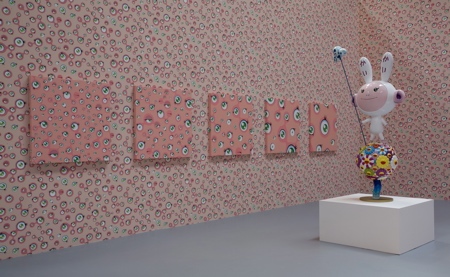
Born in Japan in the early 1960s, Murakami belongs to a generation of artists whose pictorial language brings together motifs linked to popular culture and the formal qualities of traditional Japanese art, such as flatness, pattern, and ornamentation.
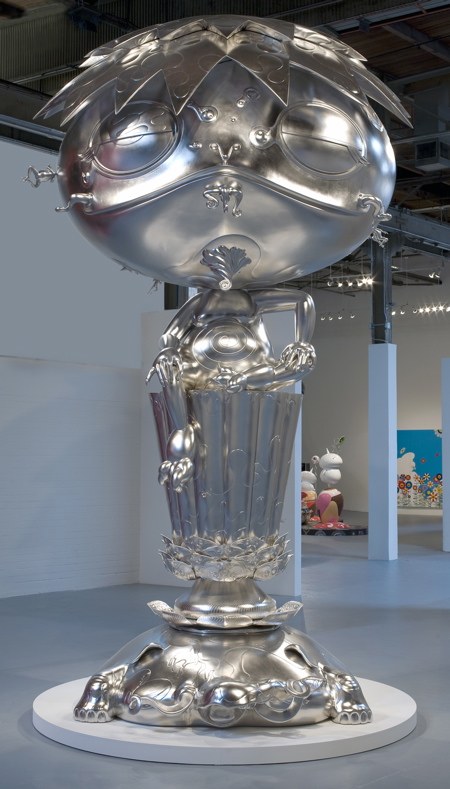
As one of the most influential artists to emerge from postwar Japan, Murakami has created a vast body of work that has reached broad audiences—from art collectors to video-game obsessed teenagers. Much like Andy Warhol and Jeff Koons, Murakami’s practice is not only referential of pop culture, but his entire life is symbiotic with pop itself, creating a reciprocal relationship between high art and mass culture. Drawing upon imagery and personalities found in his day-to-day life—in both the United States and Japan—Murakami envisions characters with both fantastical and spiritual iconographies, which he painstakingly brings to life in painting, film, installation, or sculptural form. He then returns these creations to the marketplace through the production of various erchandise—such as key chains, stickers, and T-shirts, among other items.
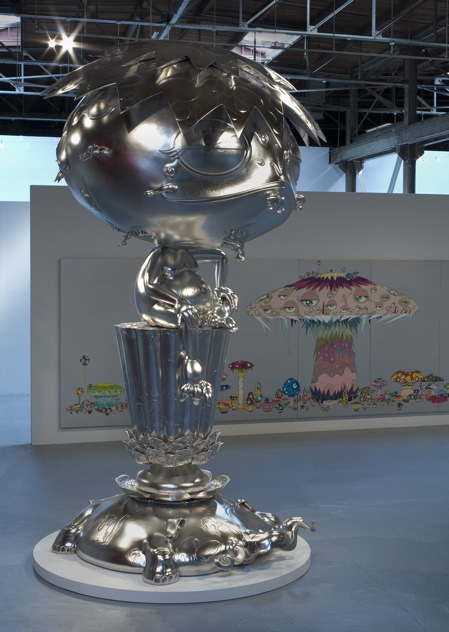
Emerging after the collapse of Japan’s bubble economy and the death of Emperor Hirohito in 1989, Murakami’s practice is born from a breakdown between production and consumption, image and value, and self and nation. Murakami’s design concepts, processes, and quality standards are thus symptomatic of this context.
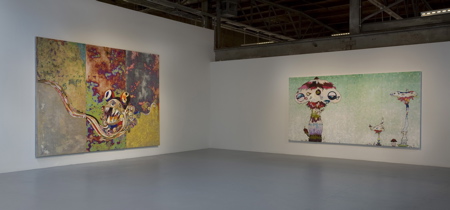
Under the guise of his international corporation Kaikai Kiki, Co., Ltd., Murakami masterminds a remarkable constellation of activities. In addition to his role as an artist, he is active as a curator, lecturer, event coordinator, radio host, newspaper columnist, and manager for emerging artists. He runs his studio in the tradition of Japan’s craft guilds, which are based on a hierarchy of staff divided into highly specialized areas of skill and craftsmanship. Inextricably involved in all facets of his corporation and production, and in an effort to preserve the artistic merit of all of his creations—whether he is producing a six-foot tall sculpture or mass-produced miniature figurine— Murakami personally evaluates the quality of his works after each stage of production.
--
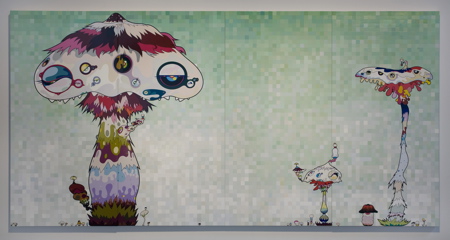
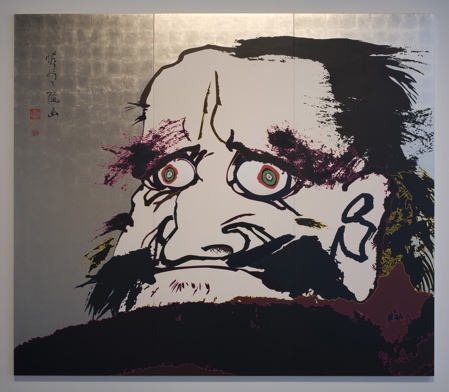
Above: from the collection of Linda and Harry Macklowe
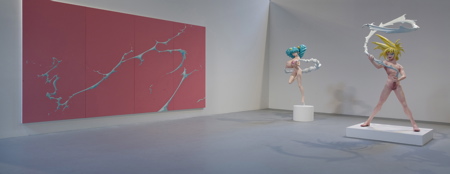
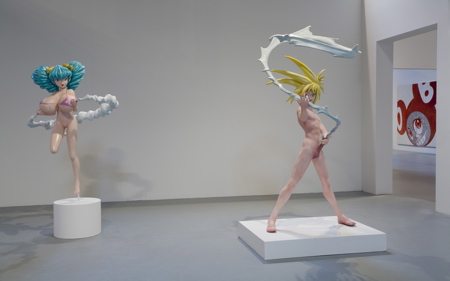
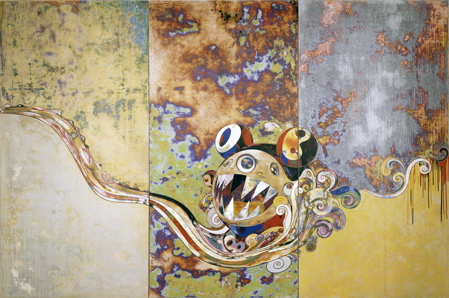
Above: from the Stephen A. Coen Collection, courtesy of Blum & Poe, Los Angeles.
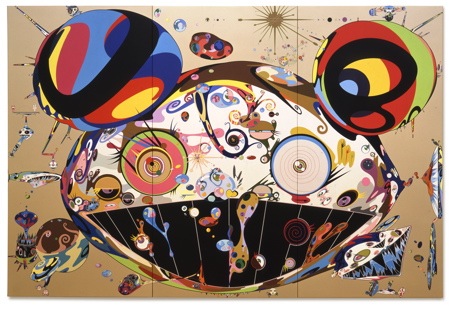
Above: from the collection of John A. Smith and Victoria Hughes. Courtesy of Tomio Koyama Gallery, Tokyo.
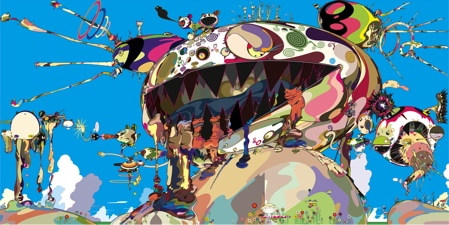
Above: from the collection of Amalia Dayan and Adam Linderman, courtesy of Galerie Emmanuel Perrotin, Paris and Miami.
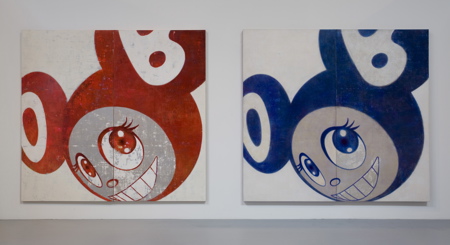
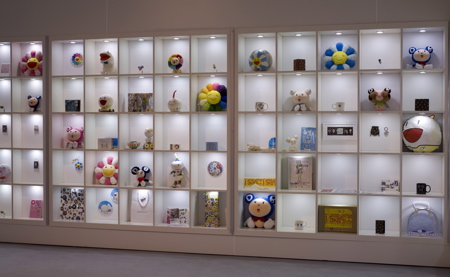
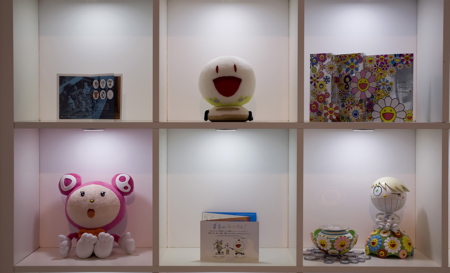
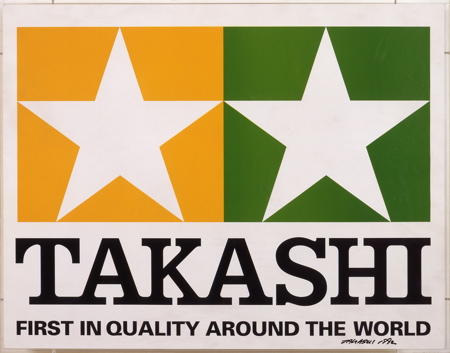
Below are some further works by Murakami that are in the MOCA show, photographed in previous exhibitions:
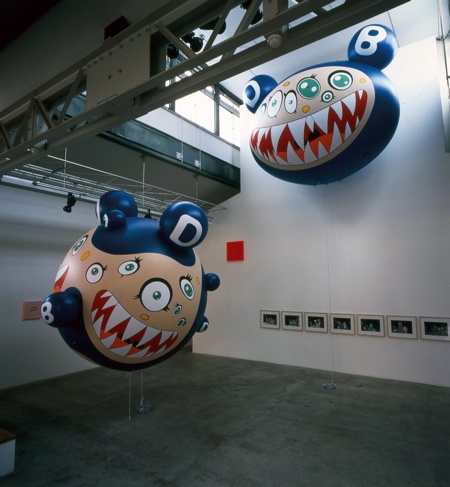
Above: installation at SCAI The Bathhouse, Tokyo, Galerie Emmanuel Perrotin, Paris and Miami, and Tomio Koyama Gallery, Tokyo (1995).
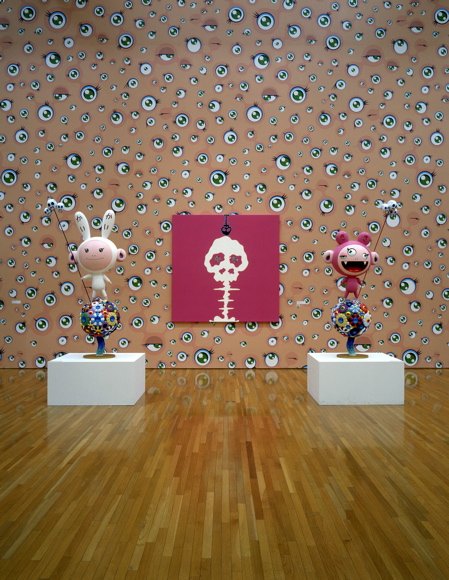
Above: installation at Museum of Contemporary Art, Tokyo 2001. Photo by Norihiro Ueno, courtesy of Galerie Emmanuel Perrotin, Paris and Miami, and Marianne Boesky Gallery, New York.
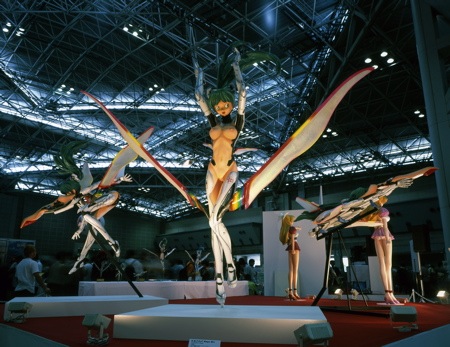
Above: installation of Second Mission Project ko2, 1999, at Wonder Festival, 2002. Image courtesy of Marianne Boesky Gallery, New York, Blum & Poe, Los Angeles, Galerie Emmanuel Perrotin, Paris and Miami, and Tomio Koyama Gallery, Tokyo. Photo by Kazuo Fukanuga.
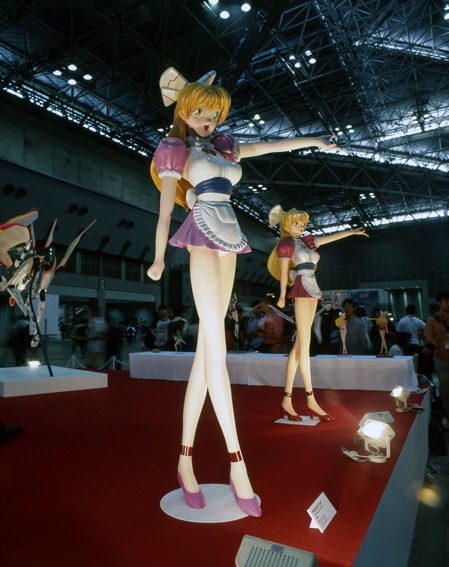
Above: installation of Miss ko2 (Project ko2) 1997, at Wonder Festival, 2002. Image courtesy of Marianne Boesky Gallery, New York, Blum & Poe, Los Angeles, Galerie Emmanuel Perrotin, Paris and Miami, and Tomio Koyama Gallery, Tokyo. Photo by Kazuo Fukanuga.
Posted by Rose Etherington